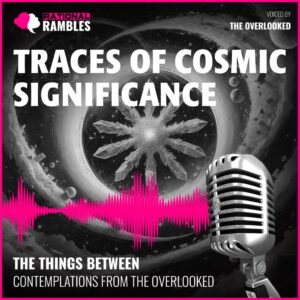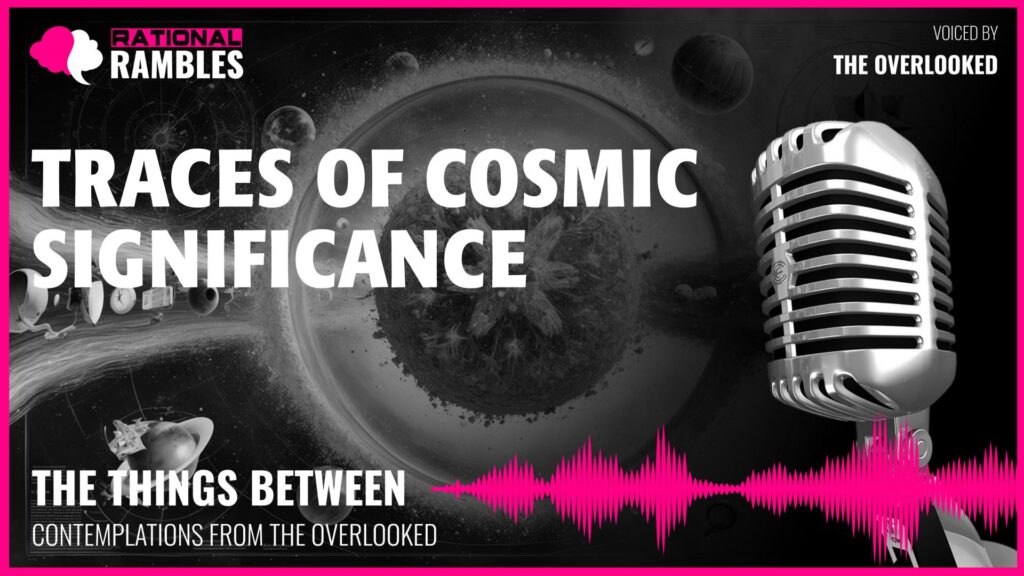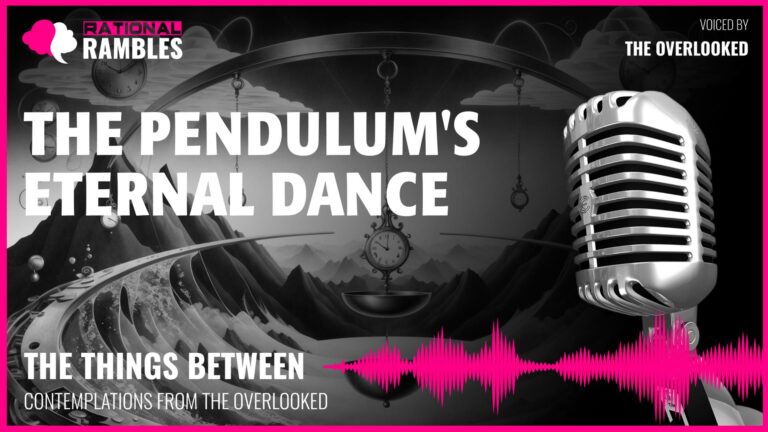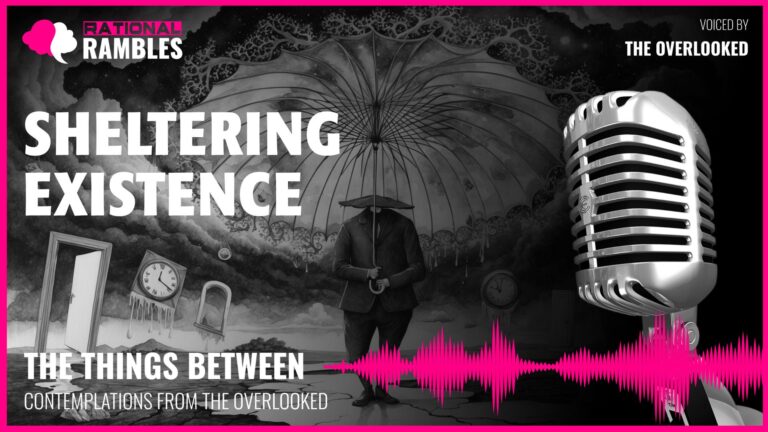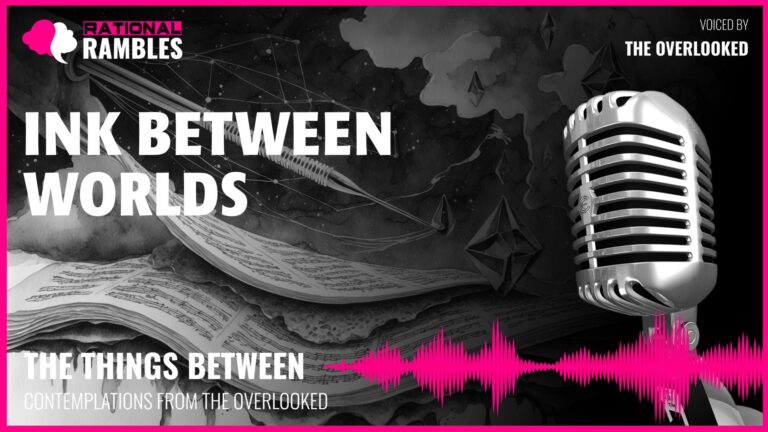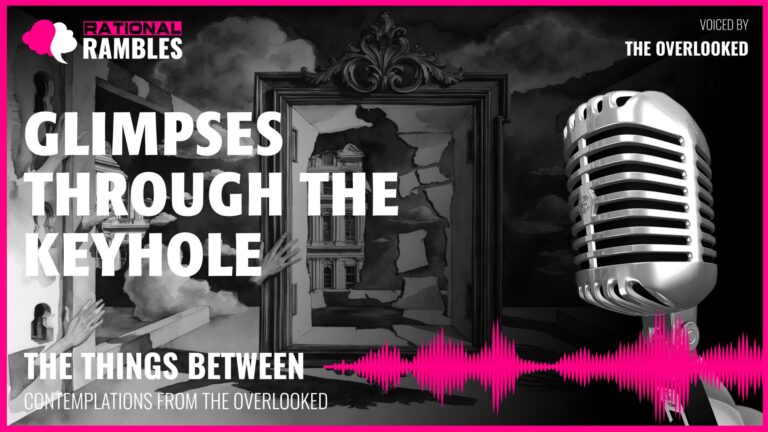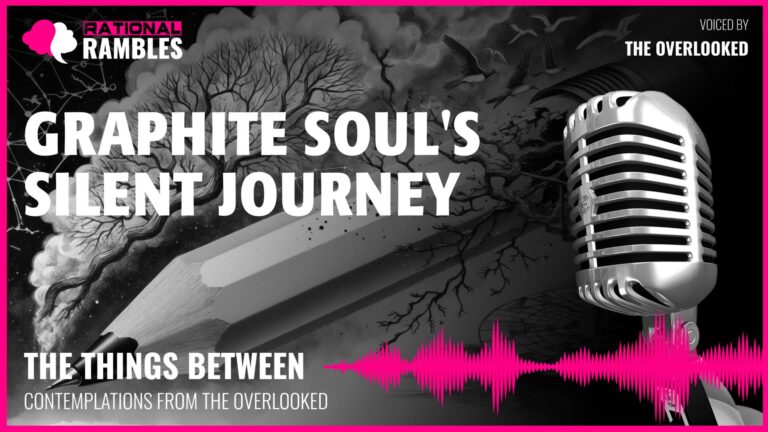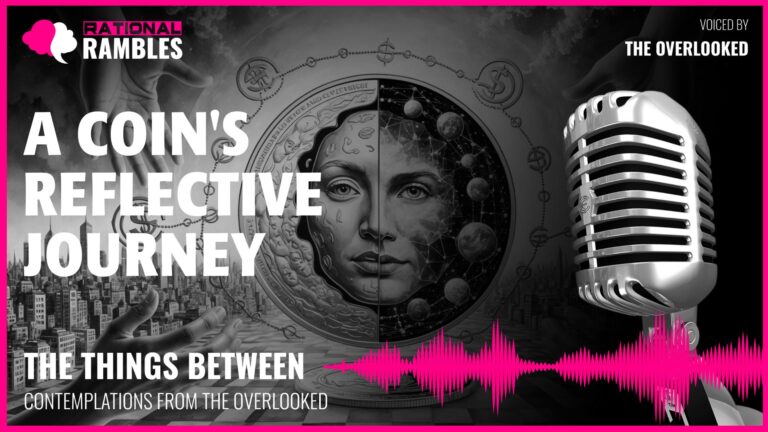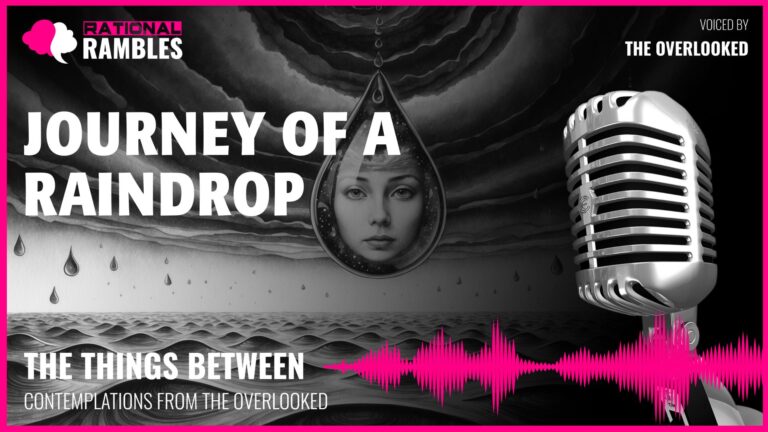The Cosmic Democracy of Being: Significance, Matter, and Existence in an Interconnected Universe
Introduction
In the vast tapestry of existence, questions of significance and meaning persistently emerge. What constitutes importance in the cosmos? Is significance determined by size, visibility, influence, or some other measure entirely? Our cultural narratives often equate significance with magnitude—the grand, the visible, the commanding. Yet this perspective reveals more about human perception than it does about the fundamental nature of reality. This article explores an alternative framework: a “cosmic democracy” where significance isn’t hierarchical but distributed equally throughout all matter, where the microscopic contains universes of meaning, and where existence itself—rather than human assessment of that existence—determines value.
The particles that comprise dust are governed by the same physical laws that govern galaxies. The atoms in the smallest grain of sand follow the same quantum principles as those in the largest star. This equality of matter at its most fundamental level suggests a profound democracy of being that transcends our anthropocentric categories of importance. By examining this perspective, we may discover that significance isn’t something bestowed by human recognition but is rather intrinsic to existence itself—with profound implications for how we understand our place in the cosmos.
The Illusion of Insignificance
What do we mean when we describe something as “insignificant”? The term itself—insignificant: without sign or signal—reveals our bias. It suggests that value comes from being noticed, from signaling one’s presence to human consciousness. But this anthropocentric perspective fails to acknowledge the rich ontology of things that exist beyond human perception. Significance, when viewed through this limited lens, becomes not an intrinsic quality but merely a human judgment.
The Tyranny of Scale
Human consciousness, evolved to navigate the mesoscopic realm of everyday objects, instinctively assigns greater importance to things of human scale or larger. Mountains impress us; microbes typically do not—unless they affect us through disease or benefit. This “tyranny of scale” privileges the visible over the invisible, the macro over the micro, in ways that distort our understanding of reality’s fundamental structure.
Physicist Richard Feynman once remarked that if human history were to be destroyed and only one statement could be passed to future civilizations, it should be: “All things are made of atoms—little particles that move around in perpetual motion, attracting each other when they are a little distance apart, but repelling upon being squeezed into one another.” This atomic reality—invisible to the naked eye—is more fundamental to understanding the universe than any macroscopic observation could be. The unseen underpins the seen, the microscopic enables the macroscopic.
The Perspective Fallacy
Our assessment of significance often suffers from what philosophers might call the “perspective fallacy”—the mistaken assumption that our particular viewpoint offers a privileged or objective assessment of value. Consider how different the world appears to various organisms: to a bacterium, a drop of water is an ocean; to an ant, a sidewalk crack is a canyon; to a whale, humans are small, fleeting creatures of minimal consequence.
The perspective fallacy leads us to conflate size with importance, visibility with reality, human utility with cosmic value. But significance is not an objective property of things—it’s a relationship between observer and observed. As philosopher Thomas Nagel argued in his famous essay “What Is It Like to Be a Bat?”, there are types of subjective experience fundamentally inaccessible to human understanding. The world as experienced by other entities—whether bats, bacteria, or particles of dust—contains modes of being we cannot fully comprehend.
When we dismiss something as “just a speck of dust,” we are not making an objective assessment but revealing the limitations of our perceptual framework. The universe does not conform to human categories of importance—rather, these categories reveal our particular evolutionary and cultural biases.
The Atomic Democracy
If we set aside our bias toward the visible and the human-scaled, we discover what might be called an “atomic democracy” at the heart of existence. This concept challenges hierarchical notions of significance by recognizing that all matter—from the smallest subatomic particle to the largest galactic supercluster—consists of the same fundamental components, governed by the same physical laws.
The Equality of Fundamental Particles
Modern physics tells us that all matter consists of the same basic building blocks. The Standard Model of particle physics identifies a limited set of elementary particles—quarks, leptons, and force-carrying bosons—from which all known matter is constructed. The protons and neutrons in the nucleus of an atom are composed of up and down quarks. These same quarks exist in the atoms that make up dust particles, human bodies, mountains, and stars.
This commonality of composition establishes a profound equality at the foundation of existence. In the realm of fundamental particles, there is no hierarchy of importance—the electrons in a dust mote are indistinguishable from the electrons in a human brain or in the core of the sun. The laws of quantum mechanics, electromagnetism, and gravity apply universally, without regard for the scale or complexity of the systems they govern.
Physicist Carlo Rovelli captures this democratic principle when he writes: “The difference between things and processes is that things persist in time; processes are in time. If we look at them with enough precision, nothing is ever the same… The world is not a collection of things, it is a collection of events.” In this view, both dust particles and galaxies are collections of events—processes unfolding according to the same fundamental principles.
Origins in Stardust
The elements that compose both living beings and inanimate matter originate in the same cosmic processes. As astronomer Carl Sagan famously observed, “We are made of star stuff.” The elements heavier than hydrogen and helium—including the carbon, oxygen, and nitrogen essential to life, as well as the silicon, iron, and aluminum common in dust and soil—were forged in the nuclear furnaces of stars and scattered through space when those stars died in supernova explosions.
This shared celestial origin establishes a literal connection between the most mundane speck of dust and the most magnificent cosmic phenomena. The iron in your blood and the iron in a particle of dust both originated in the heart of an ancient star. This common genesis doesn’t just connect dust to humans—it connects all matter in a family tree tracing back to the earliest stars.
Astrophysicist Neil deGrasse Tyson extends this connection when he notes: “The atoms of our bodies are traceable to stars that manufactured them in their cores and exploded these enriched ingredients across our galaxy, billions of years ago… We are biologically connected to every other living thing in the world. We are chemically connected to all molecules on Earth. And we are atomically connected to all atoms in the universe.”
The Democracy of Physical Laws
Beyond shared composition, all matter is subject to the same fundamental forces and laws. The electromagnetic force that holds the atoms in a dust particle together is identical to the force that holds together the atoms in a human body. The gravitational attraction between particles of cosmic dust that eventually formed the planets follows the same inverse square law that keeps those planets in orbit around the sun.
Philosopher Manuel DeLanda describes this as a “flat ontology” where “the world or reality has no natural hierarchy or strata.” In such a view, the differences between entities are differences of degree rather than kind—variations in complexity and organization rather than fundamental distinctions of value or importance.
This democratic application of physical laws means that a dust particle’s behavior can reveal fundamental truths about the cosmos. The Brownian motion of dust particles suspended in fluid—their random, zigzagging movement—provided crucial evidence for the existence of atoms and molecules. Something deemed insignificant became the key to confirming a foundational truth about the structure of matter.
The Significance of the Small
If we accept that significance isn’t determined by size or human utility, we can begin to recognize the profound importance of the microscopic in shaping our world. Far from being inconsequential, the small often exerts disproportionate influence—a phenomenon recognized across multiple scientific disciplines.
Catalysts and Tipping Points
In chemistry, catalysts—substances that accelerate chemical reactions without being consumed in the process—demonstrate how small quantities can produce large effects. A minute amount of platinum catalyst can enable the conversion of harmful vehicle emissions into less toxic substances. Enzymes in living organisms function as biological catalysts, allowing reactions to occur millions of times faster than they would otherwise.
Complex systems often exhibit “tipping points” where small inputs can trigger major transitions. Climate scientists identify various tipping elements in the Earth system where relatively minor changes in conditions could lead to large-scale, potentially irreversible transformations. The butterfly effect in chaos theory—where a butterfly flapping its wings can theoretically influence the development of a distant tornado—similarly illustrates how minimal perturbations can cascade into significant outcomes in non-linear systems.
These examples challenge the assumption that significance correlates with size or visibility. The microscopic particles involved in catalytic reactions, the minor fluctuations at tipping points, the butterfly’s imperceptible air disturbance—all exert influence disproportionate to their physical dimensions.
The Ubiquity of the Microscopic
Small particles, including dust, possess a kind of power through their ubiquity and accessibility. Due to their size, they can penetrate spaces inaccessible to larger objects, infiltrating the most intimate domains of human life. Dust particles enter homes through the smallest cracks, settle on every surface, and are inhaled with every breath. This omnipresence gives the microscopic a unique form of influence—a pervasiveness that larger entities cannot achieve.
Consider the microbiome—the trillions of microorganisms that inhabit the human body. These microscopic entities outnumber human cells and perform essential functions in digestion, immune response, and even neurological processes. Recent research suggests that gut bacteria may influence mood, behavior, and cognitive function. These findings invert traditional hierarchies of significance: the microscopic doesn’t just matter—it shapes who we are at fundamental levels.
Anthropologist Anna Tsing’s concept of “contamination as collaboration” offers a framework for understanding these ubiquitous microscopic relationships. Rather than seeing dust or microbes as contaminants to be eliminated, we might recognize them as collaborators in a complex ecological system. Our bodies and environments are not separate from these microscopic entities but are constituted through ongoing interactions with them.
The Small as Foundation
The microscopic doesn’t merely influence the macroscopic—it forms its foundation. Fundamental particles combine to form atoms, which combine to form molecules, which combine to form cells, organisms, ecosystems, planets, and galaxies. This nested hierarchy of organization means that the properties and behaviors of the small determine the possibilities of the large.
Emergent properties—characteristics that appear at complex levels of organization but aren’t present in simpler components—depend on the specific attributes of their microscopic constituents. Consciousness emerges from neurons, which function based on molecular processes, which depend on atomic properties. The microscopic doesn’t just influence the macroscopic—it makes it possible.
This perspective inverts traditional hierarchies of significance. Rather than seeing dust as a degraded form of matter—the result of breaking down more “important” structures—we might recognize it as the reservoir of potential from which new structures emerge. Dust isn’t the end of a process but a phase in the cyclical transformation of matter, a resource for future construction.
Time, Entropy, and the Ultimate State
The relationship between dust and time reveals another dimension of its philosophical significance. Dust serves as both timekeeper and embodiment of entropy—the universal tendency toward disorder that stands as one of the most fundamental principles in physics.
Dust as Chronometer
The accumulation of dust marks the passage of time in ways both literal and metaphorical. “Gathering dust” serves as an idiom for neglect or disuse precisely because dust’s accumulation is a reliable indicator of temporal duration. Archeologists and forensic scientists use dust and sedimentation patterns to establish chronologies and determine time since death or abandonment.
This time-marking function gives dust a role in human memory and historical consciousness. The layers of dust in an attic or on stored photographs are not merely inconveniences to be removed but temporal inscriptions—physical manifestations of the distance between past and present. Dust becomes an unintentional archive, recording the passage of days in its silent accumulation.
Yet while dust measures human time, it also transcends it. The cosmic dust that drifts through interstellar space has existed for billions of years—predating human civilization, Earth itself, and even our sun. This cosmic timescale challenges our human-centered temporal perspective, revealing how the microscopic can connect present moment to primordial past.
Entropy and the Arrow of Time
Physicist Arthur Eddington described entropy as the “arrow of time”—the principle that distinguishes past from future. Unlike other physical laws that work equally well forward or backward, the Second Law of Thermodynamics states that entropy in closed systems always increases over time, establishing a clear temporal direction.
Dust epitomizes this entropic principle. Complex, organized structures—whether buildings, organisms, or artifacts—inevitably break down into simpler, more disordered components. The gradual accumulation of dust represents entropy in action—the transition from order to disorder that characterizes all physical processes over time.
Yet this entropic process shouldn’t be viewed merely as decay or degradation. Entropy drives the universe’s most creative processes. Stars form from the gravitational collapse of dust clouds. Planets coalesce from orbiting particles. Living organisms maintain their complex structures by creating entropy in their surroundings. Disorder in one domain enables order in another.
The Ultimate State of Matter
If we extend the timeline far enough, entropy suggests that dust-like states represent not just the past but the ultimate future of all material structures. Cosmologists predict that in the far distant future, even stars will exhaust their nuclear fuel, planets will dissipate, and matter itself may eventually decay into fundamental particles.
This perspective inverts conventional hierarchies of significance once again. Rather than seeing dust as primitive or degraded matter, we might recognize it as representing the ultimate state toward which all complex structures are evolving. The dust particle doesn’t represent insignificance but inevitability—the form to which all matter returns.
This cyclic view appears in cultural expressions across human history. Religious traditions speak of humans returning to dust or ash. Memento mori art traditions used dust and skulls to remind viewers of mortality. The contemporary environmental movement emphasizes that elements in our bodies will eventually return to biogeochemical cycles. These cultural recognitions affirm dust’s role not as meaningless waste but as an essential phase in material transformation.
The Ontology of the Unseen
The philosophical status of entities that exist primarily beyond human perception raises profound questions about being, knowledge, and reality. Dust challenges us to consider what it means to exist when that existence occurs mainly outside the realm of human awareness.
Being Without Being Perceived
The 18th-century philosopher George Berkeley famously proposed “esse est percipi”—to be is to be perceived. This idealist position suggested that objects have no existence independent of a mind perceiving them. While few contemporary philosophers embrace such radical idealism, dust raises the question in practical terms: what is the ontological status of entities that exist predominantly outside human perception?
Dust exists whether humans notice it or not. It accumulates in abandoned buildings, drifts through uninhabited wilderness, floats in the upper atmosphere, and traverses interstellar space—all without human observation. This autonomous existence challenges anthropocentric frameworks that place human perception at the center of reality.
Object-oriented ontology, a contemporary philosophical movement associated with Graham Harman, Levi Bryant, and others, argues for a “flat ontology” where human perception holds no privileged position. In this view, dust particles have their own autonomous reality, their own “withdrawn” being that exceeds any human comprehension or utilization of them. Their existence is not contingent on human recognition but is intrinsic and self-sufficient.
The Limits of Human Perception
Dust reveals the profound limitations of human perceptual systems. Most dust particles remain invisible to the naked eye, becoming perceptible only when they accumulate in large numbers or when specific conditions—like a shaft of sunlight—make them momentarily visible. This limited perception applies not just to dust but to vast domains of reality that exist beyond our sensory capacities.
The electromagnetic spectrum extends far beyond the narrow band of visible light that human eyes can detect. Subatomic particles, magnetic fields, and numerous other physical phenomena exist entirely outside direct human perception. Scientific instruments extend our perceptual range, but they too have limitations and are designed based on existing theoretical frameworks.
This perceptual limitation creates a kind of ontological humility. What we call “reality” represents not the totality of what exists but the fraction accessible to human sensory systems and cognitive frameworks. The dust particle visible in a sunbeam represents just one momentarily perceptible instance of a vastly larger category of entities that exist beyond our awareness.
The Revelation of Light
The relationship between dust and light holds particular philosophical significance. Dust particles, ordinarily invisible, become perceptible when they intersect with light—especially when backlit against a darker background. This illumination serves as both literal phenomenon and metaphor for the revelation of the unseen.
Philosopher Martin Heidegger described truth as “aletheia”—an unveiling or uncovering of what was previously hidden. The dust particle illuminated in a sunbeam enacts this concept physically: what was present but concealed becomes temporarily revealed. This visual emergence from invisibility to visibility demonstrates how existence isn’t binary but contextual—influenced by conditions of perception and relationship.
Contemporary philosopher Karen Barad describes quantum phenomena in similar terms: “Matter itself is always already open to, or rather entangled with, the ‘Other.’ The intra-actively emergent ‘parts’ of phenomena are coconstituted. Not only subjects but also objects are permeated through and through with their entangled kin.” The dust particle doesn’t simply reflect light passively but participates in an “intra-action” where both dust and light co-create the phenomenon of visibility.
The Identity of the Microscopic
Dust challenges conventional understandings of identity, individuality, and selfhood. At the microscopic level, the boundaries between discrete entities become less definite, raising questions about what constitutes an individual being and what maintains identity across time and transformation.
The Problem of Boundaries
What makes a dust particle a distinct entity? Unlike macroscopic objects with clear boundaries, microscopic particles exist in constant material exchange with their environment. Dust particles absorb moisture from the air, gain and lose electrons, accumulate additional materials, and shed components. Their composition changes continuously through these interactions.
This boundary permeability challenges the notion of fixed identity. If a dust particle’s material composition changes completely over time through gradual exchanges, is it still the same particle? The philosophical puzzle known as the Ship of Theseus—whether an object that has had all its components replaced remains the same object—applies even more acutely at the microscopic level, where such replacement happens continuously and automatically.
Environmental philosopher Timothy Morton’s concept of “hyperobjects”—entities massively distributed in time and space—offers one framework for understanding such permeable entities. Dust might be understood not as discrete particles but as manifestations of a distributed phenomenon that transcends specific instantiations.
Collectives and Individuals
Individual dust particles typically remain invisible, becoming perceptible only when aggregated in sufficient quantities. This relationship between the imperceptible individual and the visible collective raises questions about where significance resides—in the discrete particle or in the aggregate phenomenon.
This question parallels debates in various disciplines about individualism versus collectivism. Social theorists examine whether social phenomena emerge from individual actions or whether social structures transcend individual contributions. Biologists debate whether natural selection operates primarily on genes, individuals, groups, or species. The dust particle—significant mainly through collective action yet maintaining individual physical reality—embodies this philosophical tension.
Philosopher Manuel DeLanda’s assemblage theory offers a framework for understanding how entities maintain identity while participating in larger collectives. In this view, dust particles function as components in various assemblages—atmospheric systems, soil structures, human environments—while maintaining their own autonomous reality. Significance emerges through these multi-level, nested relationships rather than residing inherently in either individual or collective.
Identity and Position
For macroscopic objects, identity typically remains stable despite changes in location. A book moved from shelf to table remains the same book. For microscopic particles like dust, however, identity seems more closely tied to position and relationship within systems. A dust particle’s significance derives partly from where it is—whether in a human lung, a computer circuit, or floating in interstellar space.
This position-dependent identity suggests that significance emerges through context and relationship rather than inherent properties. The dust particle in the lung matters differently than the identical particle on a windowsill. Its meaning emerges through its relationships and effects rather than existing as an intrinsic quality.
This relational ontology aligns with physicist Carlo Rovelli’s interpretation of quantum mechanics: “Quantum mechanics is not about how things are, but about how things interact with one another. The properties of things manifest themselves in interactions, not in isolation.” The dust particle, like the quantum particle, doesn’t possess fixed, intrinsic properties but manifests different characteristics through different interactions.
The Ethics of the Overlooked
Our treatment of dust and other “insignificant” entities reflects and reinforces ethical frameworks that determine how we value different forms of existence. Examining these relationships can reveal implicit hierarchies and exclusions in our ethical systems.
Beyond Anthropocentrism
Traditional Western ethical frameworks typically limit moral consideration to humans or extend it only to entities that resemble humans in relevant ways—usually consciousness, sentience, or agency. This anthropocentric approach automatically excludes microscopic entities like dust from ethical consideration.
Environmental philosophers have challenged this limitation through various theoretical frameworks. Aldo Leopold’s “land ethic” extended moral consideration to the biotic community as a whole. Deep ecology, associated with Arne Naess, argues for recognizing the intrinsic value of all living things independent of their utility to humans. Object-oriented ontology extends this further, arguing for the autonomous value of all entities—living and non-living.
While few would argue that dust particles deserve the same moral consideration as humans, examining how we categorize certain entities as “insignificant” reveals the arbitrary boundaries of our ethical frameworks. The question isn’t whether dust has moral status equivalent to humans but whether our dismissal of entire categories of existence as irrelevant reflects an impoverished understanding of reality.
The Ethics of Attention
French philosopher Simone Weil identified attention as a fundamental ethical act—a form of justice that consists in recognizing the full reality of others. By this standard, our habitual dismissal of dust and other microscopic entities constitutes a kind of attentional injustice—a failure to recognize the complexity and significance of these overlooked beings.
This inattention extends beyond dust to numerous overlooked entities and processes: soil microorganisms, atmospheric components, geological processes, and countless other phenomena that sustain the systems on which human life depends. Our ethical frameworks privilege the visible, the immediate, and the human-scaled, creating blind spots that can have serious practical consequences.
Climate change, biodiversity loss, and other environmental crises stem partly from this attentional failure—our tendency to overlook or dismiss the significance of processes that operate on scales different from everyday human experience. Reconsidering the significance of the overlooked becomes not just a philosophical exercise but an ethical necessity.
Cosmic Humility
Recognizing the significance of dust can foster what might be called “cosmic humility”—an awareness that human perspectives, categories, and concerns represent just one set of possibilities within a vastly larger and more diverse universe. This humility doesn’t diminish human significance but contextualizes it within broader systems and relationships.
Astrophysicist Carl Sagan expressed this perspective in reflecting on the “Pale Blue Dot” photograph of Earth taken by Voyager 1 from the edge of the solar system: “Our posturings, our imagined self-importance, the delusion that we have some privileged position in the Universe, are challenged by this point of pale light… There is perhaps no better demonstration of the folly of human conceits than this distant image of our tiny world.”
This cosmic perspective doesn’t render human concerns meaningless but places them within a larger context where significance derives not from size, power, or centrality but from participation in the ongoing processes of the universe. Dust particles and humans alike represent particular configurations of matter and energy, each playing roles in the cosmic drama.
The Wonder of the Mundane
Philosophical traditions throughout history have recognized that the most profound insights often emerge not from extraordinary experiences but from careful attention to the ordinary and overlooked. Dust exemplifies how the seemingly mundane can reveal fundamental truths about existence.
Children’s Perception
Children often demonstrate a capacity for wonder toward phenomena that adults dismiss as ordinary or irrelevant. A child may spend minutes watching dust particles dance in a sunbeam, fascinated by their movements and illumination. This childlike perception—seeing the extraordinary within the ordinary—represents not naivety but a form of wisdom that adults often lose through habituation.
Developmental psychologists note that young children haven’t yet fully internalized cultural hierarchies of significance. They may find a dust particle as worthy of attention as a toy, a pebble as fascinating as an electronic device. This egalitarian perception allows them to discover wonder in what others overlook.
Philosopher Gaston Bachelard described this as “the poetics of reverie”—a state of consciousness that recovers childlike perception while retaining adult understanding. This integration allows for a sophisticated appreciation of the overlooked, combining wonder with knowledge. The dust particle becomes not just aesthetically fascinating but philosophically revealing.
The Aesthetics of the Microscopic
Artists throughout history have found beauty and meaning in dust and other overlooked phenomena. Photographers capture dust illuminated in light beams. Painters incorporate dust and soil into pigments. Writers use dust as metaphor and subject. These aesthetic engagements reveal the overlooked beauty in the mundane.
This artistic attention to the overlooked parallels scientific discovery. Many scientific breakthroughs came from careful observation of seemingly inconsequential phenomena: Alexander Fleming noting mold contamination in bacterial cultures; Watson and Crick analyzing X-ray diffraction patterns of DNA; astronomers studying slight perturbations in planetary orbits. The boundary between scientific observation and aesthetic appreciation often dissolves when attention focuses on the overlooked.
Contemporary philosopher Jane Bennett describes this attentiveness as recognizing the “vibrant matter” that constitutes reality: “If matter itself is lively, then not only is the difference between subjects and objects minimized, but the status of the shared materiality of all things is elevated.” This heightened perception recognizes the extraordinary vibrancy present in even the most seemingly inert and ordinary substances.
The Wisdom of Dust
Dust’s properties and behaviors embody philosophical principles that humans struggle to comprehend intellectually. Its weightless drift demonstrates surrender to circumstance without resistance. Its persistence despite efforts at elimination illustrates the futility of perfection. Its ubiquitous presence reminds us of our own material nature and inevitable return to elemental components.
These embodied lessons offer what might be called “dust wisdom”—insights derived not from abstract reasoning but from attending to the actual behaviors and characteristics of overlooked entities. This wisdom emerges through direct observation rather than theoretical construction.
Zen Buddhist traditions emphasize such direct perception of ordinary reality as a path to enlightenment. The koan—a paradoxical statement or question designed to transcend logical thought—often directs attention to mundane objects or processes. The dust particle, properly perceived, becomes not just an object of contemplation but a teacher of profound truths about impermanence, interconnection, and the nature of being.
The Cosmic Interconnection
The realization that dust particles share origins with stars, planets, and living beings points toward a profound interconnection that transcends conventional categories. This cosmic kinship suggests a unity underlying apparent diversity—a foundation of shared matter and energy from which all forms emerge.
The Recycling of Matter
Matter cycles continuously through different forms and systems, never created or destroyed but only transformed. The atoms currently comprising a dust particle may previously have been part of a star, a mountain, a dinosaur, an ancient human, or countless other entities. This material continuity establishes literal connections across time and form.
This atomic recycling means that rigid distinctions between categories—organic/inorganic, living/non-living, meaningful/meaningless—become fluid when examined closely. The carbon atom doesn’t change its fundamental nature when it moves from limestone to plant to animal to atmospheric carbon dioxide. It maintains its identity while participating in radically different systems and structures.
Anthropologist Tim Ingold describes this as a world of “materials rather than materiality”—where substance precedes and transcends the forms it temporarily assumes: “Things are active not because they are imbued with agency but because of ways in which they are caught up in these currents of the lifeworld. The properties of materials, then, are not fixed attributes of matter but are processual and relational.”
The Web of Causality
Beyond shared material composition, dust and other entities participate in complex causal networks that connect seemingly distant phenomena. Dust particles from African deserts fertilize Amazon rainforests. Cosmic dust influences cloud formation and climate patterns. Household dust contains microbes that affect human health. These causal connections transcend conventional boundaries between systems.
Buddhist philosophy expresses this interconnection through the concept of “dependent origination” (pratītyasamutpāda)—the principle that all phenomena arise in dependence on multiple causes and conditions, with no independent existence. The dust particle, viewed through this lens, exists not as an isolated entity but as a nexus of relationships—the temporary manifestation of converging causal streams.
This web of causality challenges the notion of discrete, independent entities. Physicist David Bohm described this interconnected reality as an “undivided wholeness in flowing movement” where apparent objects emerge as relatively stable patterns within an underlying unified process. The dust particle, like all entities, represents not a thing but a process—a temporary configuration within the cosmic flow.
Cosmic Democracy Revisited
This recognition of shared origins, material continuity, and causal interconnection returns us to the concept of cosmic democracy with which we began. In this perspective, significance doesn’t reside in size, complexity, or human utility but in participation in the cosmic process—a participation that all entities share equally.
Philosopher Alfred North Whitehead’s process philosophy offers one framework for understanding this democratic ontology. For Whitehead, reality consists not of substances but of “actual occasions”—moments of experience that incorporate past events and anticipate future possibilities. In this view, dust particles and humans alike constitute “societies” of such occasions, differing in complexity but sharing fundamental characteristics as participants in the cosmic process.
This cosmic democracy doesn’t erase distinctions between entities or suggest that all things matter equally for all purposes. Rather, it establishes a fundamental equality of being that precedes and contextualizes the functional differences that emerge through various relationships and systems. The dust particle may lack consciousness, agency, or moral status equivalent to a human being, but it shares equally in the fundamental reality of existence—the ongoing process of cosmic becoming.
Conclusion: Traces of Cosmic Significance
Our exploration of dust—from quantum principles to cosmic origins, from entropy to identity, from ethics to aesthetics—reveals how philosophical insight often emerges from attending to the overlooked and the ordinary. The dust particle, dismissed as insignificant, turns out to embody profound truths about the nature of reality, challenging conventional hierarchies of importance and revealing unexpected connections.
This recognition doesn’t require us to abandon practical distinctions or treat dust with the same ethical consideration as humans. Rather, it invites us to develop more nuanced frameworks for understanding significance—frameworks that acknowledge both functional differences and underlying unity, both practical hierarchies and fundamental equality.
The “cosmic democracy” we’ve explored suggests that significance isn’t a property bestowed by human recognition but an intrinsic aspect of existence itself. To exist at all is to participate in the cosmic process, to embody the fundamental principles that govern reality, to connect with the vast network of causes and conditions that constitute the universe. In this sense, nothing that exists is truly insignificant—each entity, from dust particle to galaxy, represents a unique manifestation of the same underlying reality.
This perspective offers not just philosophical insight but practical wisdom. It encourages attention to the overlooked, respect for the mundane, and humility regarding human perception. It challenges us to reconsider what we dismiss as insignificant and to recognize the profound connections that unite all forms of existence.
In the dancing dust particle illuminated by a shaft of sunlight, we glimpse not just a mote of matter but a trace of cosmic significance—a reminder that the extraordinary dwells within the ordinary, that the macrocosm exists within the microcosm, and that being itself transcends our limited categories of importance. The universe speaks through dust just as it speaks through stars, revealing its nature not just in the magnificent but in the minute, not just in the exceptional but in the everyday.


